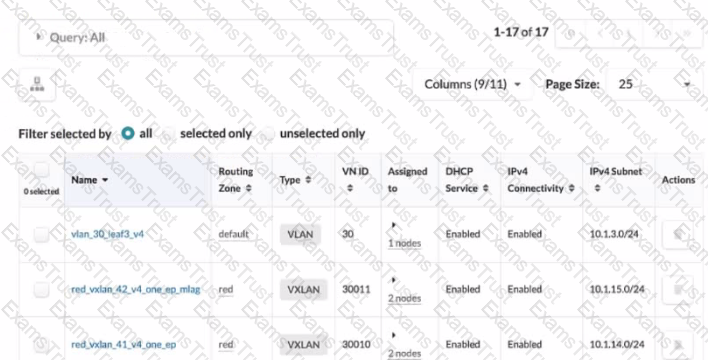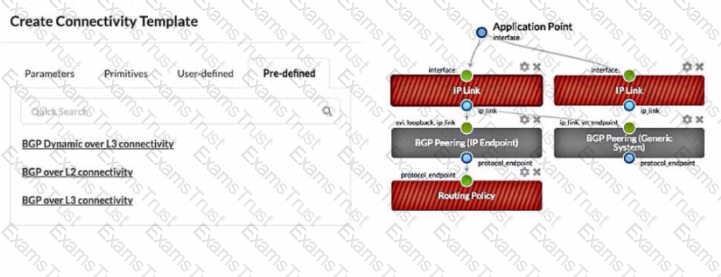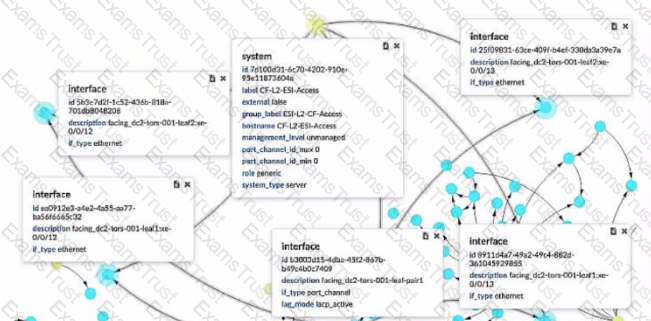What is the function of the Revert button in the Juniper Apstra Ul?
Exhibit.

Referring to the exhibit, how do you display the IPv6 subnets lot all of the listed VXLANs?
Which two statements are correct about Time Voyager? {Choose two.)
You use Juniper Apstra to enable a new VXLAN virtual network.
Which two components would be automatically derived in this situation? (Choose two.)
Exhibit.

Referring to the exhibit, which statement is correct?
You want to apply a configlet to a specific device using Juniper Apstra. Which two parameters would be used to accomplish this task? (Choose two.)
Which two statements are correct about repairing a Juniper Apstra cabling map before deploying your blueprint? (Choose two.)
IBA probes analyze telemetry data from specified devices within a blueprint. Which component Identities devices that supply data tor a specific probe?
Which statement is correct about the Juniper Apstra Rendered configuration?
Juniper Apstra has indicated an anomaly with respect to cabling.
What are two ways to remediate the issue? (Choose two.)
What is the purpose of using a routing zone inside Juniper Apstra software?
You have a virtual network that needs controlled access to other virtual networks in the same routing zone. Using the Juniper Apstra Ul. which feature would be used to accomplish this task?
Which protocol is used to advertise EVPN routes?
InJuniper Apstra. which three modes are available fordevices? (Choose three.)
Exhibit.

Which two statements ate correct about the information shown in the exhibit? (Choose two.)
Which statement about Juniper Apstra role-based access control is correct?
Which two statements are correct regarding a pristine configuration in Juniper Apstra? (Choose two.)
What are two system-defined user roles that are available in Juniper Apstra? (Choose two.)
You are adding a new switch to Juniper Apstra software. The Managed Devices page shows the "0 OS-Quarantined" status. What is the proper next step to make the device ready for use in a blueprint?